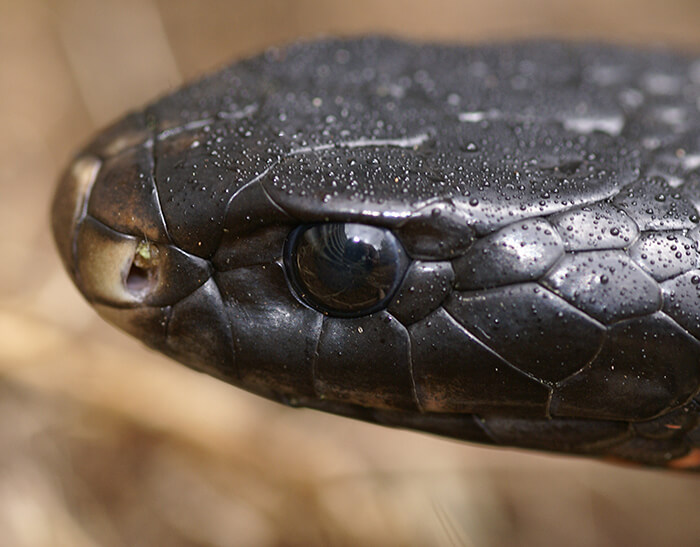Introduction
Snake bites are a major medical emergency that can take place in various settings, specifically in areas where snakes are prevalent. In Australia alone, there are numerous species of poisonous snakes such as the Tiger Snake, Eastern Brown Serpent, and King Brown Snake. Comprehending how to effectively handle snake attacks is crucial for anyone that hangs around outdoors or lives in backwoods. This article will discover extensive emergency treatment monitoring approaches for snake bites and detail finest techniques for reacting to these incidents.
First Aid Monitoring of Snake Bites: Ideal Practices for Every Situation
When managing a serpent bite, the initial action Snakebite statistics Australia can significantly influence the sufferer's result. Immediate activity is essential because speedy medical treatment typically determines the degree of injury or survival rate. Here are western brown snake vital first aid principles to remember:
Stay Calm: The first step in handling a snake bite is to stay tranquil. Panic can raise heart prices and increase the spread of venom throughout the body. Call for Help: Dial emergency solutions immediately. Give them with your location and any kind of information concerning the serpent if possible. Keep the Sufferer Still: Urge the sufferer to stay as still as feasible. Motion can raise blood flow, increasing poison absorption right into the bloodstream. Positioning: If possible, place the damaged limb at or below heart degree. This positioning assists slow down poison spread. Remove Limited Clothing: Loosen up any kind of apparel or precious jewelry around the bite website; swelling may happen quickly after a snake bite. Do Not Apply Ice/Cold Packs: As opposed to popular belief, using ice can get worse tissue damages and ought to be avoided.
Understanding Snake Variety and Their Habitats
Tiger Snakes and Their Habitat
Tiger serpents (Notechis scutatus) are amongst Australia's many well-known venomous snakes due to their hostile nature and potent venom.
- Habitat: They typically occupy coastal regions, wetlands, and locations with dense vegetation like marshes and swamps. Risks: Awareness of local tiger serpent environments can lower the danger of encountering one unexpectedly.
Eastern Brown Snakes: A Considerable Threat
The Eastern Brown Serpent (Pseudonaja textilis) is another very venomous types located throughout eastern Australia.
- Habitat: This snake flourishes in urban locations, farming lands, and grasslands. Behavior: Recognized for its fast strikes when intimidated, understanding its habits might aid alleviate encounters.
Recognizing Signs and symptoms of Snake Bites
Identifying signs and symptoms beforehand can improve opportunities of effective therapy:

- Pain and swelling around the bite site Discoloration or bruising
- Nausea or vomiting Difficulty breathing Signs of shock (e.g., pale skin, rapid heart beat)
First Help Procedures for Specific Snake Bites
First Aid for Tiger Snake Bite
In situation of a tiger snake bite:
Stay tranquility; maintain still. Call emergency situation services immediately. Immobilize the influenced limb utilizing a splint if available. Do not try to suck out venom or apply ice.First Help for Eastern Brown Snake Bite
For an eastern brownish serpent bite:
Keep tranquility; reassure the victim. Call emergency situation services without delay. Position them conveniently while staying clear of movement. Mark the edges of swelling with a pen when possible for observation.Creating Your Snake Bite First Aid Kit
A well-prepared emergency treatment set can make all the difference throughout emergencies:
|Thing|Objective|| -------------------------------|---------------------------------------------------|| Compression plasters|To incapacitate Click here for more limbs|| Sterilized gauze|To cover injuries|| Antihistamines|For allergies|| Emergency contact numbers|Quick access throughout dilemmas|| User's manual|Detailed guidance on taking care of emergency situations|
What Needs to You Never ever Do When Dealing With a Snake Bite?
Here's a list of common pitfalls when dealing with serpent bites:

Do not use tourniquets; they can create even more damage than good. Avoid cutting into or trying to draw out venom from the wound. Never supply alcohol or energizers to targets as it could aggravate their condition.
FAQs Concerning First Aid Management of Serpent Bites
1. What should I do if I see a snake?
Stay tranquility and back away slowly without abrupt movements.
2. Just how do I recognize if a serpent is venomous?
Research local species' features; several have unique color patterns or markings.
3. Can I use ice on a snake bite?
No, using ice can raise tissue damage.
4. How much time do I have actually after being bitten prior to looking for clinical attention?
Seek medical interest instantly-- time is critical with poisonous bites!
5. Is it secure to drive myself to the hospital after a bite?
No! It's dangerous as signs and symptoms may get worse en course; wait for specialist help.
6. Are all serpents in Australia dangerous?
No! While Australia has lots of hazardous serpents, there are also non-venomous varieties that posture no threat.

Conclusion
The emergency treatment management of snake attacks calls for prompt action combined with knowledge regarding neighborhood species' actions and environments like those of tiger serpents and eastern brown serpents in Australia. By following finest practices laid out above-- such as remaining calmness, calling emergency situation solutions promptly, and recognizing what not to do-- you significantly improve survival opportunities after such mishaps occur.
Equipping on your own with knowledge about different types of snakes in your area and preparing a proper emergency treatment kit will guarantee you prepare must an encounter arise-- making you better prepared to handle this potentially dangerous situation effectively!